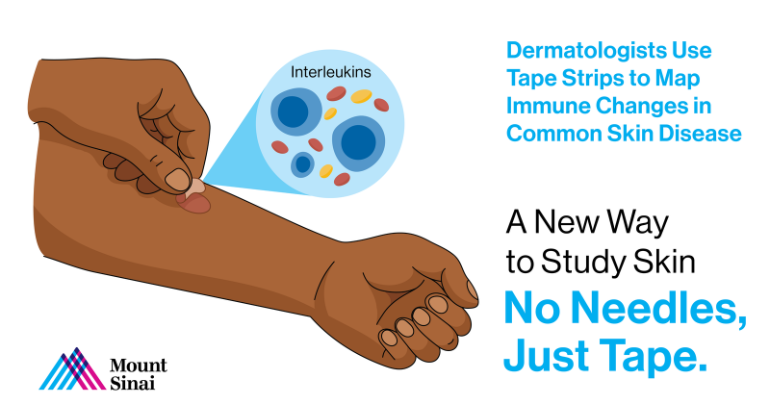2025-06-10 マウントサイナイ医療システム (MSHS)

<関連情報>
- https://www.mountsinai.org/about/newsroom/2025/mount-sinai-dermatologists-use-tape-strips-to-map-immune-changes-in-common-skin-disease
- https://www.jaad.org/article/S0190-9622(25)00180-X/fulltext
脂漏性皮膚炎患者におけるテープストリッププロファイリングによる免疫・脂質異常の同定 Tape-strip profiling identifies unique immune and lipid dysregulation in patients with seborrheic dermatitis
Benjamin Ungar, MD ∙ Meredith Manson, BA ∙ Madeline Kim, MD, MS ∙ … ∙ Diane Hanna, DNP ∙ Patrick Burnett, MD, PhD ∙ Emma Guttman-Yassky, MD, PhD
Journal of the American Academy of Dermatology Published:February 1, 2025
DOI:https://doi.org/10.1016/j.jaad.2025.01.082
Abstract
Background
Seborrheic dermatitis (SD) is a common, chronic inflammatory skin disease with limited understanding of its pathophysiology. Molecular profiling has been limited by invasiveness of sampling methods.
Objective
To analyze the molecular skin profile of adult patients with SD using tape strips.
Methods
Tape-strips obtained from facial lesions of 26 adult SD patients and 18 demographically matched healthy controls were evaluated with RNA sequencing.
Results
SD molecular skin fingerprint was characterized by strong and significant upregulation of interleukin (IL)23/T-helper (Th)17 and Th22 (i.e. IL23A, IL22, PI3, LL37, S100A8, S100A12), some Th1 skewing (OASL, STAT1, CXCL9), and limited Th2 modulation. A parallel downregulation of barrier markers (CLDN1/8, FA2H, ELOVL3) was also observed.
Limitations
Limited representation of mild and severe SD patients.
Conclusion
These data deepen our understanding of SD suggesting that it has robust Th17/Th22, some Th1 skewing, and minimal Th2 activation, and associated skin barrier alterations. This provides rationale for novel immunomodulatory treatment approaches for SD patients targeting IL23/Th17 and/or Th22 pathways.


